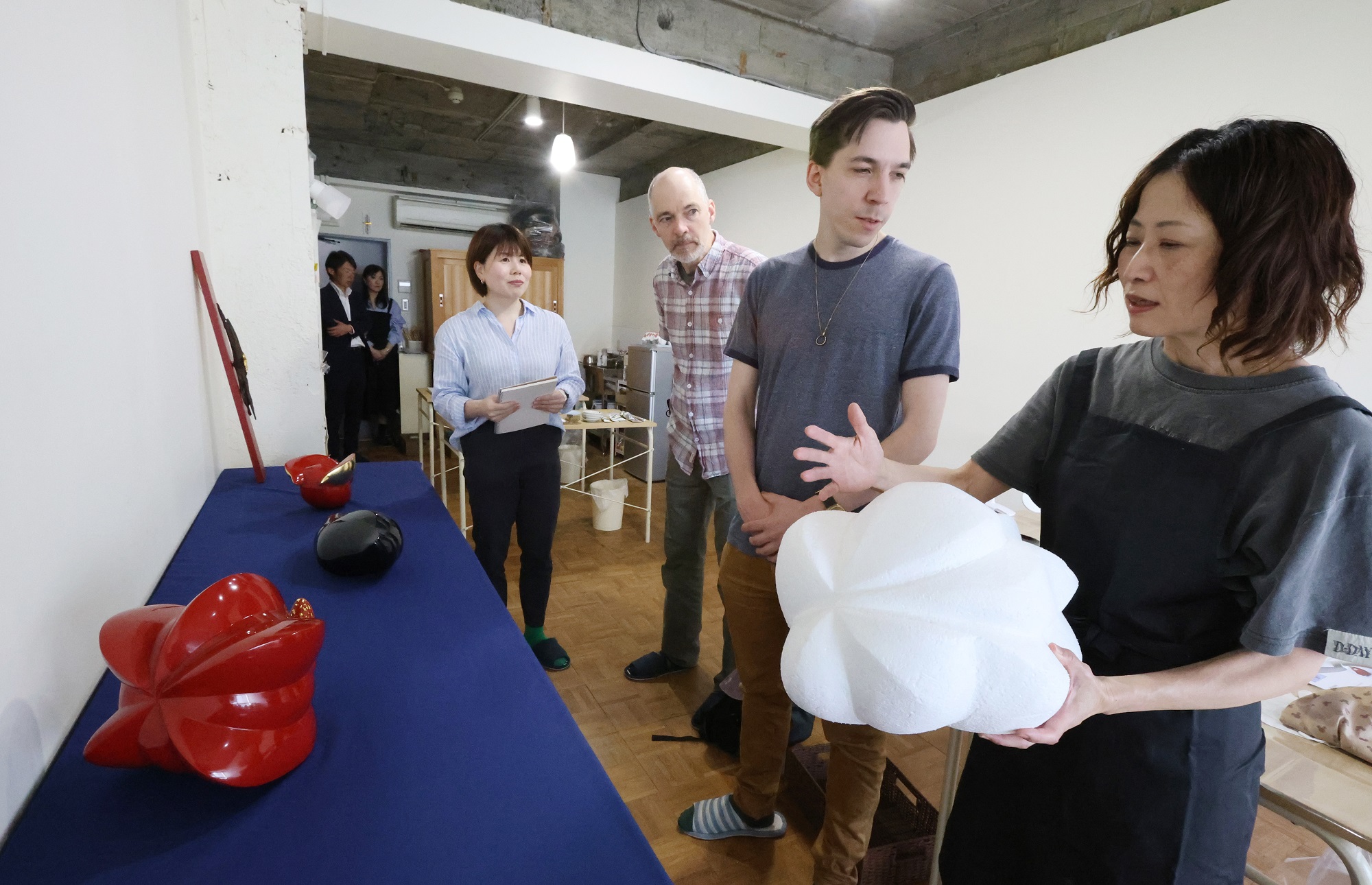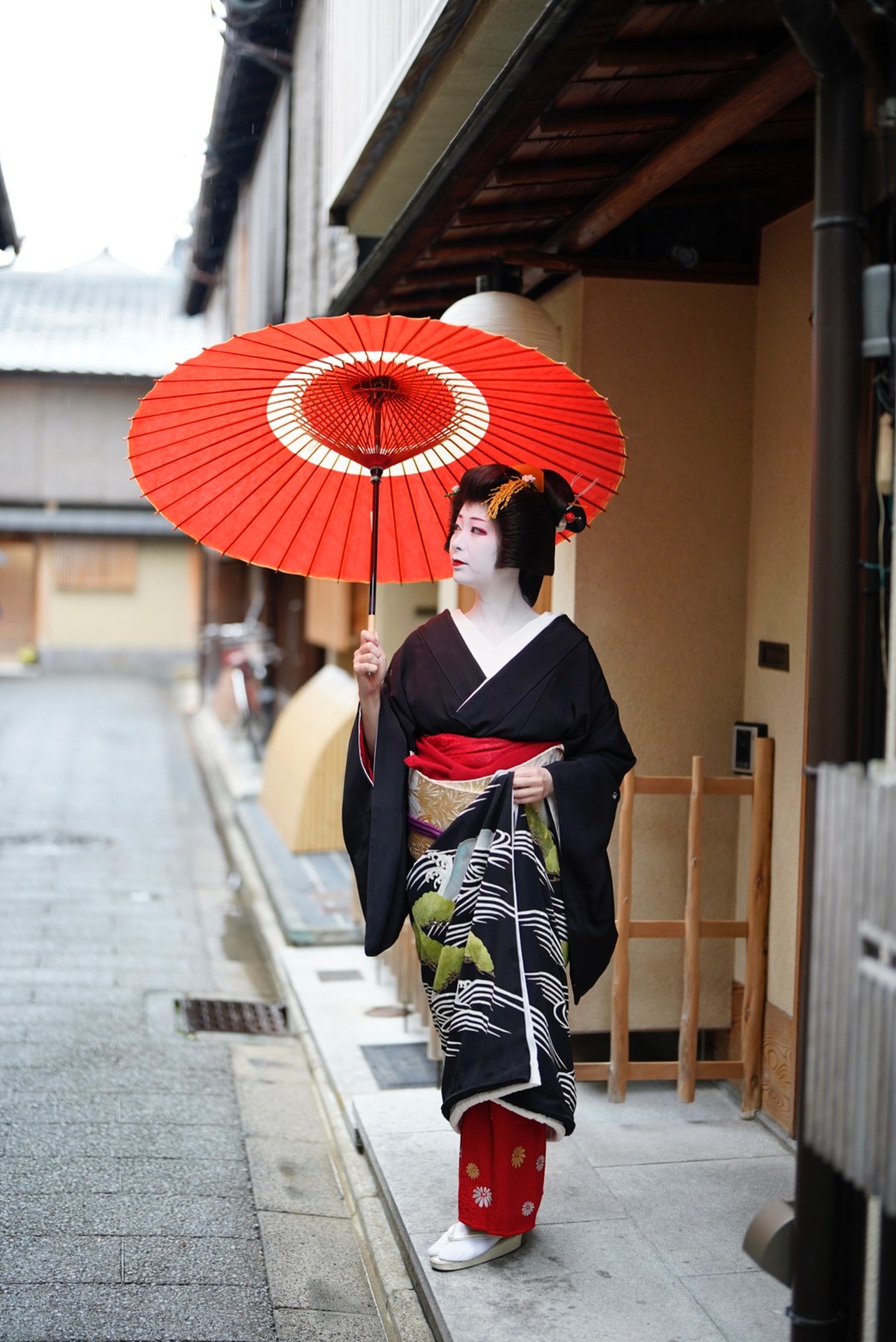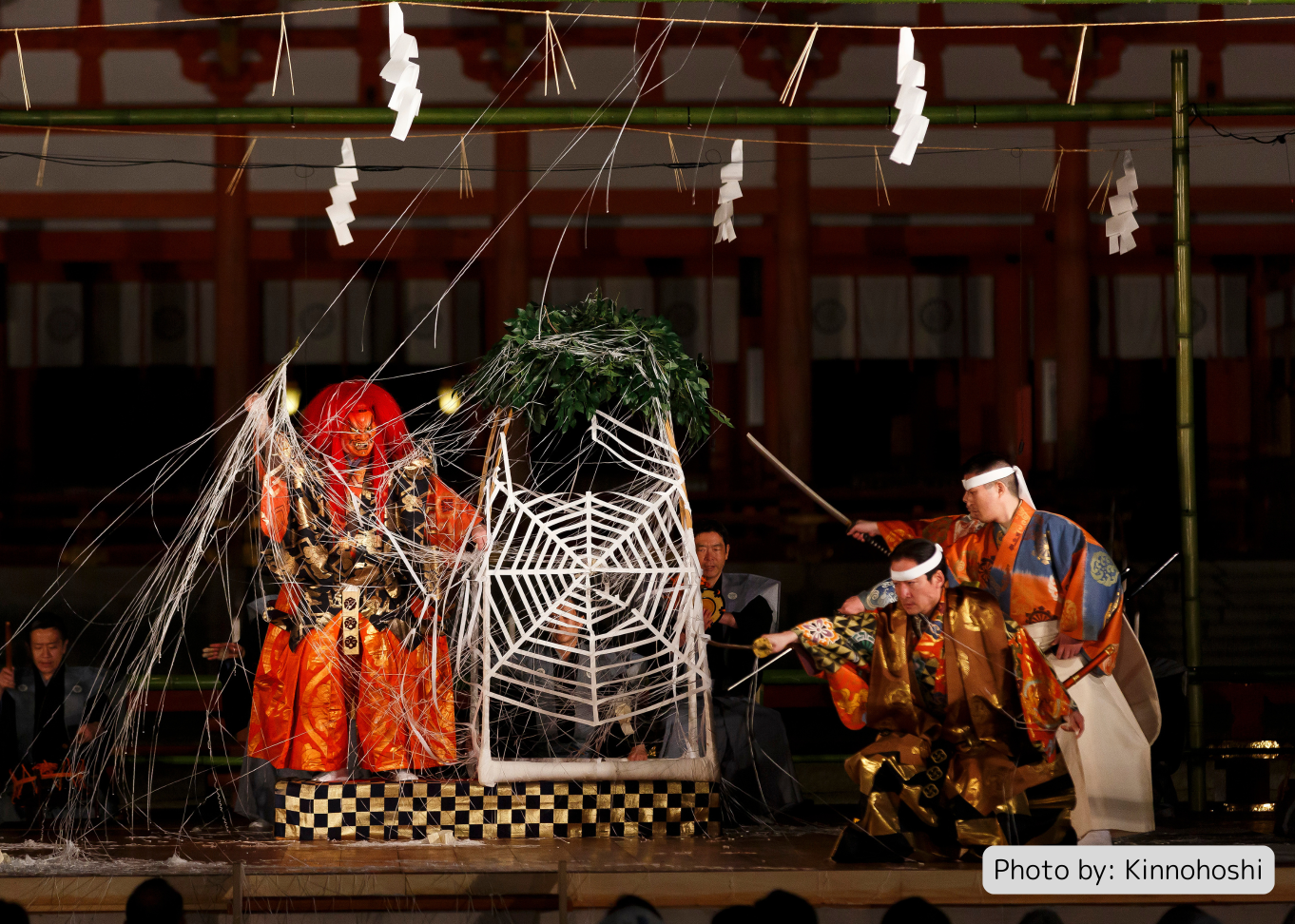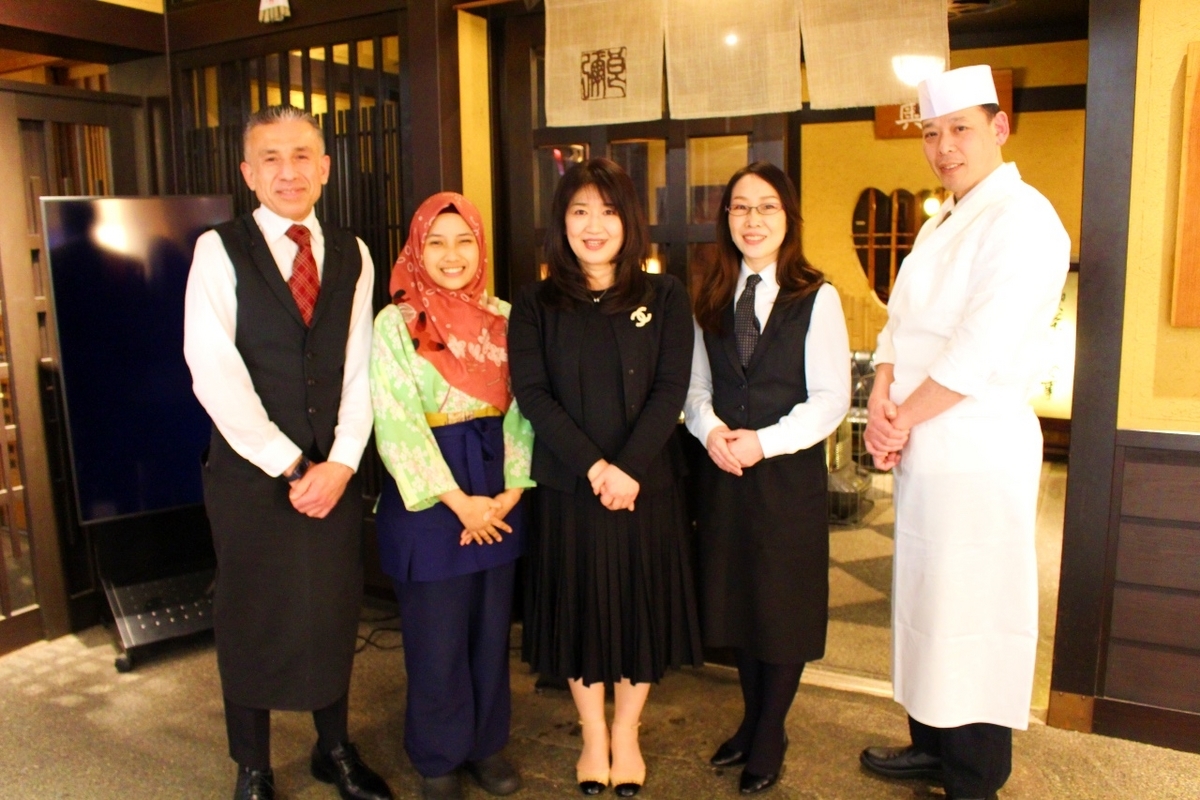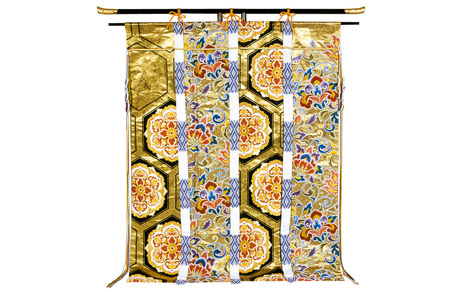
Traditional Industries of Kyoto refers to industries planned and produced primarily within the district of Kyoto City which make products that are closely connected to traditional Japanese culture and lifestyles through the use of traditional techniques and methods.
Nishijin-ori (Woven textiles)
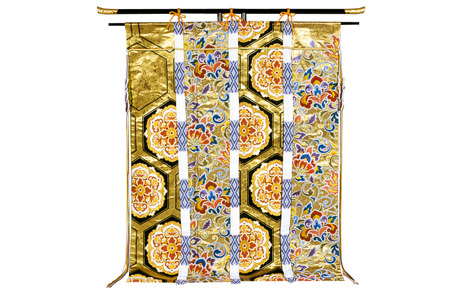
With origins that trace back to the 5th or 6th century when the powerful Hata clan began silkworm raising and silk weaving, this type of silk weaving began in earnest in the 15th century at the time of the Onin War. Nishijin-ori is extremely varied in nature, utilizing hand-weaving, brocading, damask, omeshi, kasuri, and ro weaves, velvet and more, and it is renowned for its exquisite use of threads of many colors. It is used in interior decoration, Shinto priests’ clothing, Noh theatre costumes, bolts of cloth for kimono and especially for the obi sash used with kimono.
Kyo-kanoko shibori (Dyed textiles)
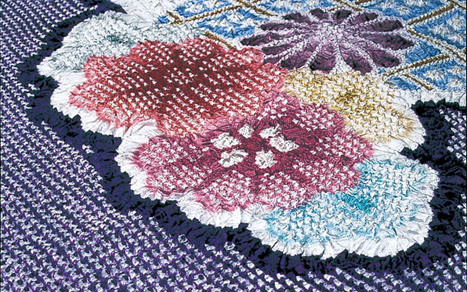
Shibori dyeing techniques, which passed to Japan from India around the 7th century, came to be widely used under the name of kanoko in the 17th century. It is a complicated and varied type of pattern dyeing that involves using various methods of binding a silk textile in order to selectively dye certain parts of the fabric. Hitta shibori, hitome shibori, umbrella-pattern and hat-pattern types exist, among others.
Kyo-yuzen (Yuzen fabric dyeing)
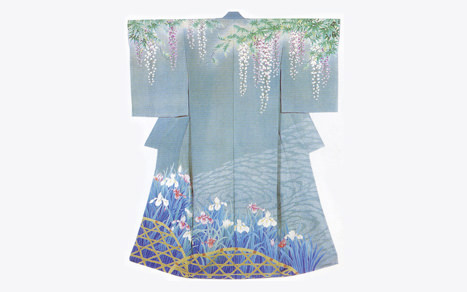
The name Kyo-yuzen dates back to Miyazaki Yuzensai’s compilation of old dyeing methods in the latter half of the 17th century. Hand-drawn yuzen that inherits old advanced techniques and stencil yuzen that was developed in the beginning of the Meiji period are the two types of yuzen dyeing currently in use. Stencil yuzen brought yuzen to the general populace, and it retains an unshakable position among dyeing methods for Japanese clothing.
Kyo-komon (Komon dyeing)
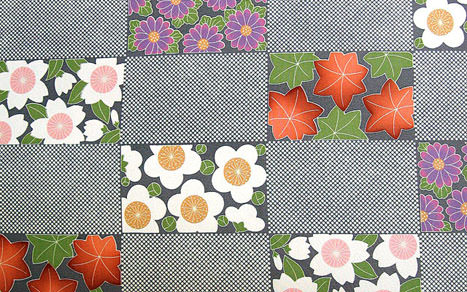
Komon is a type of yuzen fabric dyeing that uses stencil techniques which was used on the kamishimo formal clothing of samurai in the Edo period. With changes in taste and the introduction of chemical dyes in the early Meiji period, komon dyed textiles went from being single-colored to multicolored, as techniques improved in competition with standard yuzen dyeing. The colors and patterns tend to be more subdued in comparison to the vibrant colors of standard yuzen.
Kyo-kumihimo (Braided cord)
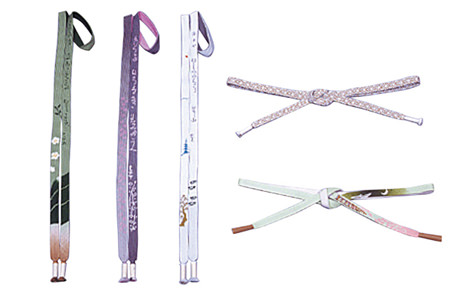
Traditional techniques used to dye clothing worn for mourning and kuromontsuki (black kimono with a family crest). Previously a native Japanese method of dying black over red with betel nut-based dye was used, but these days, foreign-produced black dyes are used. Black dyes are still used after a pre-dyeing of red or blue in methods called benishitaguro and aishitaguro respectively, and these methods each have their own unique feel.
Kyo-fusahimo and Yorihimo (Knot tassels and twisted cords)
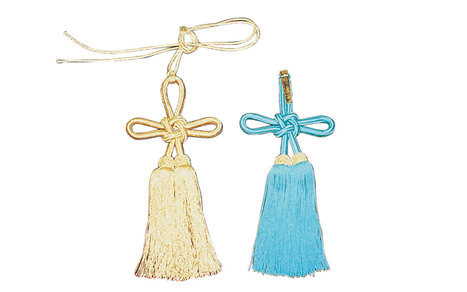
Kumihimo cords made by braiding multiple materials and yorihimo made by twisting together cords each have their own unique feel and polished beauty, but by tying the cords in even more ways and adding a tassel, a sublime effect is produced. They have many uses from Shinto and Buddhist religious rites to tea ceremony, flower arrangement, martial arts, dolls, apparel and in interior design.

